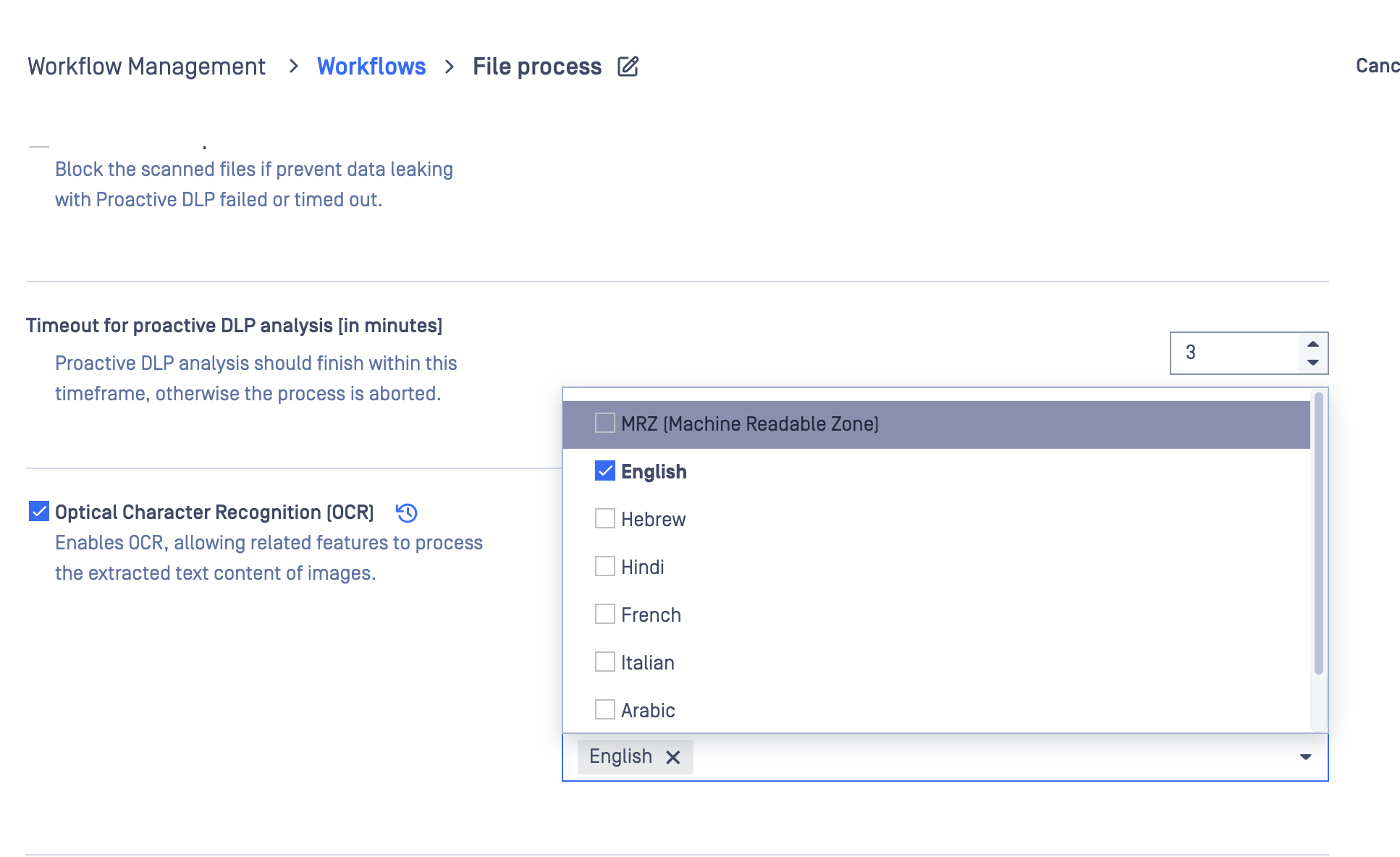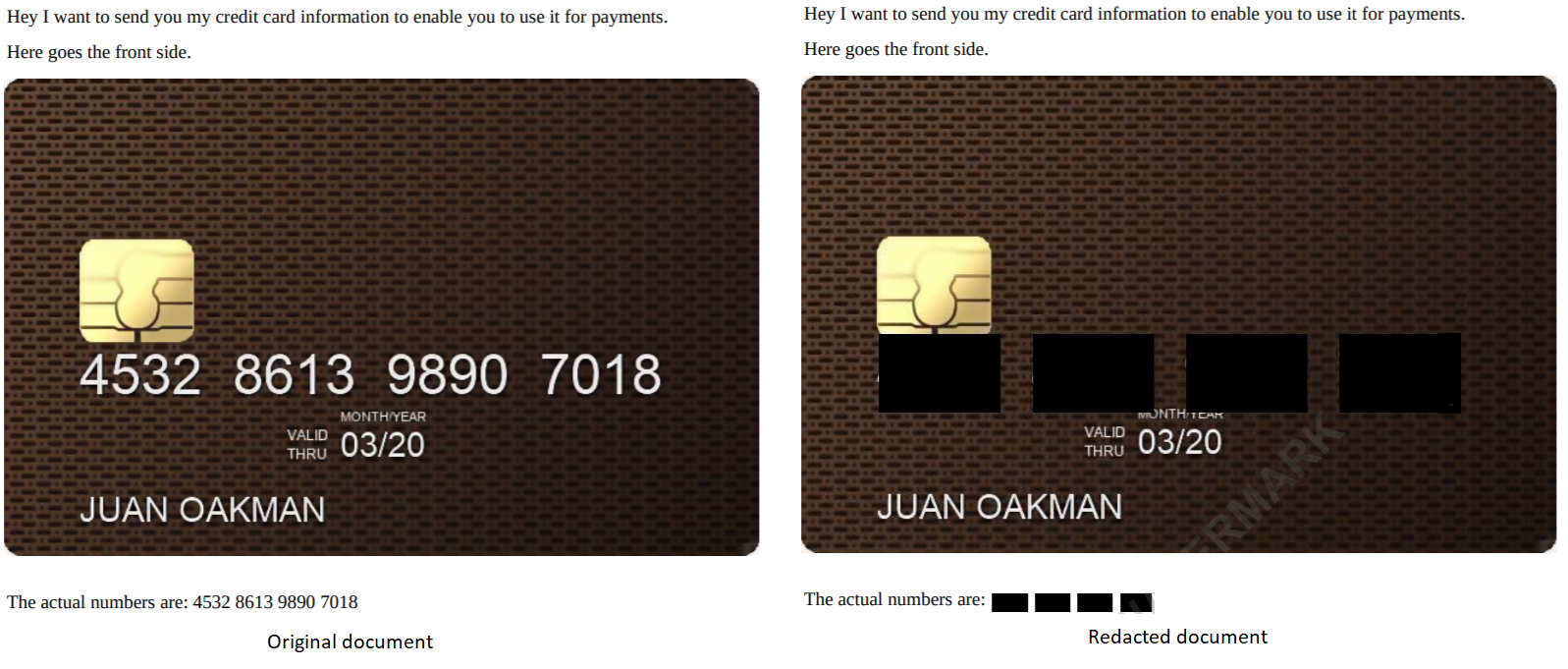OCR is a commonly-used technology to recognize text inside images. It examines the text of the documents and converts the characters into code that can be used for data processing. Proactive DLP now can utilize this technology to detect and redact sensitive information.
Supported file types
| Category | Formats / Extensions |
|---|---|
| Portable Document Format | |
| Microsoft Office | doc, docx, MS Word XML, xls, xlsx, ppt, pptx, rtf |
| Standalone Images | jpg, png, tiff, bmp, jp2, jpg2, jpf, jpx, mj2, mjp2, jpm, jpgm |
Supported languages
- Arabic
- English
- French
- Hebrew
- Hindi
- Italian
- Japanese
*The OCR feature can also detect MRZ (Machine Readable Zone) data from ICAO-compliant ID cards.
Enabling OCR
Policies > Workflow rules > "Workflow name" > Proactive DLP > Optical character recognition (OCR)

OCR Quality:
- Normal: detect the information without pre-processing images
- Best: pre-processing images before detecting the image to have a better detection rate, however, performance will be impacted
Example output

System requirements
Vectors can affect the accuracy
- Low contrast documents
- Documents with small text
- Documents with blurry images
- Colored paper or background in documents
- Handwritten text
- Unusual or script-type fonts
This feature uses AI functionality for Optical Character Recognition (OCR) to extract text from images and scanned documents, converting it into machine-readable text. You have the option to enable or disable the AI-powered feature within the configuration settings. By default, this feature is disabled but can be activated or deactivated at any time based on user preference. If you enable the AI-powered feature, OPSWAT will not use your content to train or fine-tune its services. You should not rely on any results generated from AI-based functionality without verifying them.

